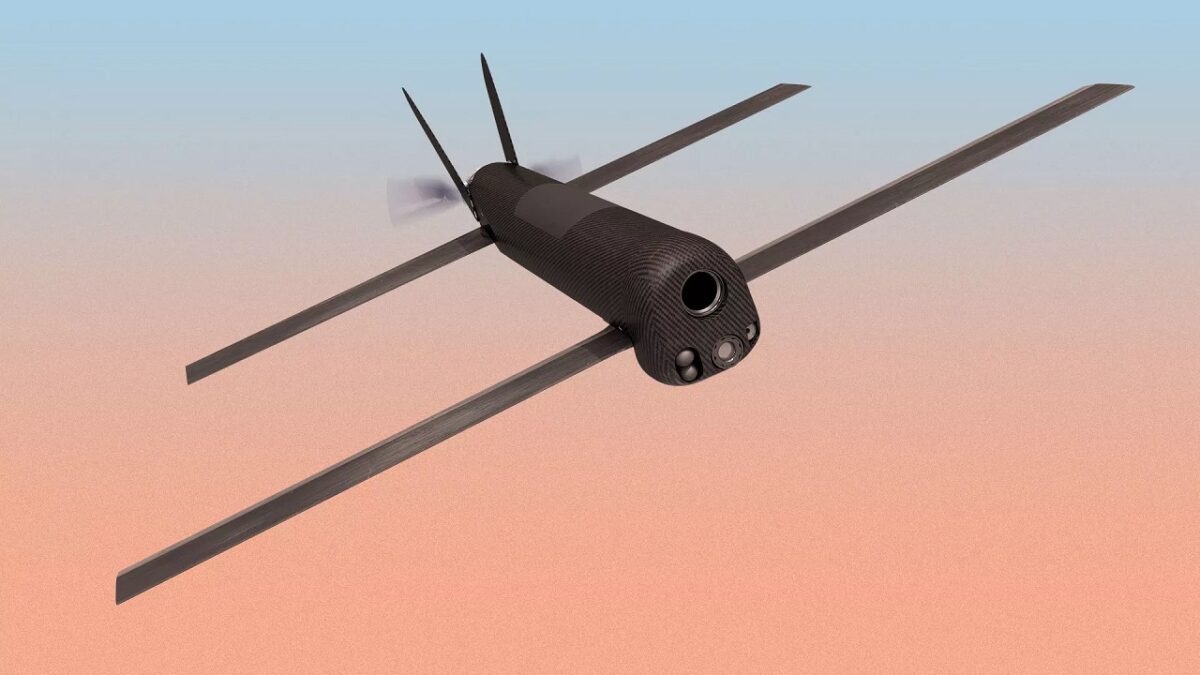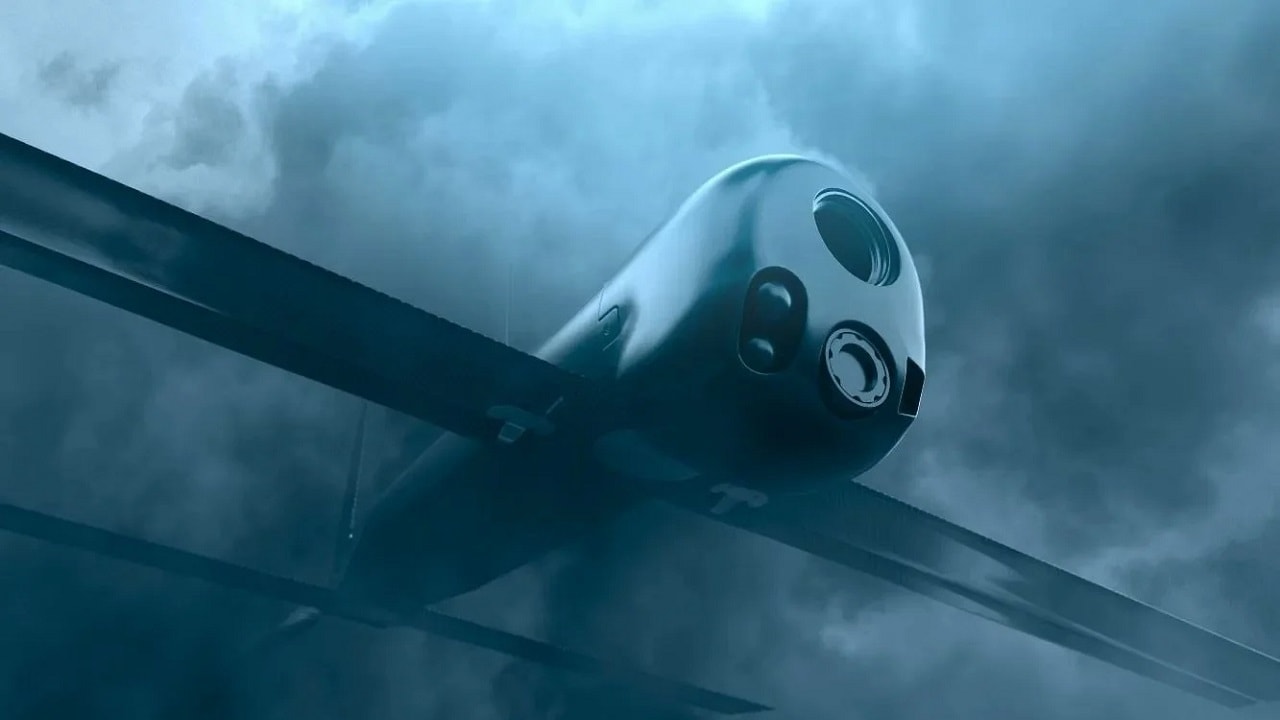When the Pentagon announced its decision to supply Ukraine with the Switchblade drone, many experts were skeptical of the difference it could make on the battlefield.
The U.S. military has sent Ukraine weapon systems worth billions of dollars. Some of them, such as the FGM-148 Javelin anti-tank weapon and FIM-92 Stinger anti-aircraft missile, are more advanced than others and have seen wider use. Others, such as the M777 155mm towed howitzer, are more pertinent to the current phase of the war in the Donbas.
But the Switchblade loitering munition is probably the most interesting of the lot.
The Switchblade Loitering Munition
A tube-launched loitering munition, the Switchblade gives small tactical teams great firepower.
There are two versions of the Switchblade tactical unmanned aerial system: the Switchblade 300 and Switchblade 600. In concept similar, the two versions of the loitering munition differ in their size and the warhead that they carry.
The Switchblade 300 is designed for anti-personnel targets and packs a warhead the size of a Claymore mine—C-4 explosives matched with hundreds of small metal ball bearing. This version is only two feet and weighs just over five pounds. It has an operational range of six miles (or 15 minutes) and can reach speeds of up to 100 miles per hour.
The Switchblade 600 is designed for armored targets and packs a much larger warhead. At over five feet and weighing about 120 pounds, this version of the loitering munition has a warhead that resembles that of the FGM-148 Javelin anti-tank missile and is specifically designed to take out tanks and other armored or hardened targets. It has an operational range of 24 miles (or 40 minutes) and can cruise at a speed of 70 miles per hour, with the capability to reach 115 miles per hour if necessary.
The Switchblade loitering munition was first developed for the U.S. military. American troops in Afghanistan were having trouble taking out Taliban and al-Qaida fighters over long distances. The Switchblade made it easier to target them and allowed special operations and conventional units to take out insurgents from larger distances. When the U.S. military responded to the threat of the Islamic State in Iraq and Syria, the Switchblade was there, too, offering American troops great tactical precision strike capabilities.
The U.S. Special Operations Command (SOCOM) is one of the Switchblade’s primary customers, having first incorporated the loitering munition in the early 2010s; in September 2021, SOCOM awarded AeroVironment a $20 million contract for the Switchblade 600.
“Switchblade 600 is an all-in-one, man-portable tactical missile that provides warfighters with the capability to fly, track and engage non-line-of-sight targets and light-armored vehicles with precision lethal effects,” Brett Hush, the vice president and product line general manager for TMS at AeroVironment, had said in a press released when SOCOM announced the contract for the Switchblade 600.
“The tube-launched, Switchblade 600 can be easily transported for deployment from fixed and mobile platforms in any environment, providing operators with superior force overmatch and minimizing exposure to direct and indirect enemy fires,” Hush had added.
The Switchblade Over Ukraine
When it comes to effectiveness, the available evidence points out that the Ukrainian military has been using the Switchblade 300 and Switchblade 600 tactical unmanned aerial systems to great effect.
For example, in a truly rare video, the Ukrainian SSO, the Ukrainian military’s special operations forces, launch a Switchblade 300 drone against a Russian T-72B3 tank.
Directly, the Switchblade 300 lacks the necessary destructive power and can’t do any serious damage to a tank—although it could disable it if it is aimed carefully at its tracks, admittedly a difficult proposition. So, instead, the Ukrainian special operators bided their time, and when the Russian tank stopped, and its crew got out, they launched the loitering munition against the Russian tankers. A tank without a crew isn’t fighting anytime soon.
And this is just one instance of the Switchblade in action.
The Sensor to Shooter Option
Only a few weeks before the Russian military invaded Ukraine, AeroVironment announced a new “sensor to shooter” kit that is designed to connect AeroVironment’s small tactical reconnaissance unmanned aerial systems with the Switchblade 300.

Switchblade Drone. Image Credit: Manufacturer Handout.
With this kit, a small tactical unit could use other small drones to scout an area before launching the Switchblade and transferring the targeting data from the reconnaissance drones to the loitering munition.
“Sensor to Shooter maximizes the operator’s ability to see first, strike first, combining the superior intelligence, surveillance, and reconnaissance capabilities of AeroVironment’s SUAS with the precision strike capabilities of the Switchblade loitering missile system,” Charles Dean, vice president for global business development and sales of Unmanned aerial systems at AeroVironment, said.
U.S. conventional and special operations units already use the Puma, Raven, and Wasp small unmanned aerial systems that are compatible with the “Sensor to Shooter” kit.
1945’s New Defense and National Security Columnist, Stavros Atlamazoglou is a seasoned defense journalist specializing in special operations, a Hellenic Army veteran (national service with the 575th Marine Battalion and Army HQ), and a Johns Hopkins University graduate. His work has been featured in Business Insider, Sandboxx, and SOFREP.

